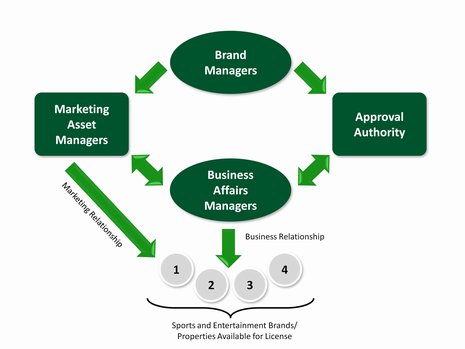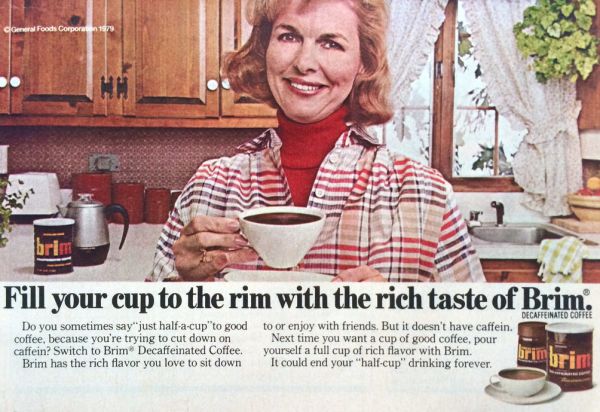Best-in-class manufacturers, such as Coca-Cola, General Mills and Kellogg’s, often license brands such as Disney, the NFL or the Beatles into their company to increase sales, reach a wider consumer base, and in general, improve their business results. To optimize the acquisition of these licensed properties, most of them employ a centralized business structure and approval process. The structure, which can take on many forms, typically looks something like this:
In this type of structure, each group interacts with the other to optimize the management of their acquired licensed properties, specifically:
- Brand Managers set their business objectives and then develop strategic plans to achieve them. Part of their plans may involve using licensed properties. When this occurs, they look to the Marketing Asset Managers to identify the right properties to help them meet their goals.
- Marketing Asset Managers (MAMs) are tasked with determining those licensed properties that will best help the Brand Managers achieve their business objectives. As part of the strategic planning process, the MAMs will meet with each Brand Manager to understand their objectives and their licensed property needs. They then compile a list of all the properties requested by the brand managers to determine whether a property has been requested by more than one brand manager and who else may benefit from these assets. From here, the MAMs lay out a plan to leverage the assets to help the brand managers meet their objectives. The MAMs then brief the Business Affairs Managers on the specific rights or deal terms they need for each licensed property to be acquired.
- The Business Affairs Managers (BAMs) are charged with negotiating all licensing deals. The BAMs are negotiation experts who have a deep knowledge of the licensing industry and the properties currently held by the company or desired to be held. Once the BAMs understand from the MAMs what terms they must acquire from the licensed property owners, they develop a proforma of the cost to achieve the license. The BAMs then brief a designated Approval Authority on what properties they have been asked to license.
- The Approval Authority sets the standards and guidelines for all licensing deals. At the briefing, the Approval Authority will review the deal term sheet for each property to ensure compliance with company guidelines and request the BAMs to address any concerns they may have. Once their concerns have been addressed, the Approval Authority authorizes the BAMs to acquire the license of the property within budgeted financial limits.
Armed with this approval, the BAMs acquire the license of the requested properties. The licensed properties are then managed by the MAMs to help the respective brand managers meet their business objectives.
This structure and process enables companies to quickly ascertain:
- Who will determine which properties need to be licensed?
- Who will set the deal terms of the license?
- Who is required to approve the deal terms?
- Who will negotiate the deals and maintain a repository of “deal” knowledge?
- Who will manage the acquired licensed properties?
- Who will ensure contract compliance and inventory of the contracts?
The Blake Project helps organizations release the full potential of their brands through brand research, brand strategy, brand education and brand licensing. We have designed this comprehensive, one day workshop on brand licensing.
The Blake Project Can Help: The Brand Licensing Audit
Branding Strategy Insider is a service of The Blake Project: A strategic brand consultancy specializing in Brand Research, Brand Strategy, Brand Growth and Brand Education





